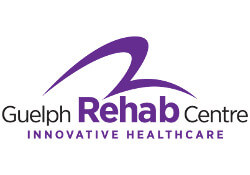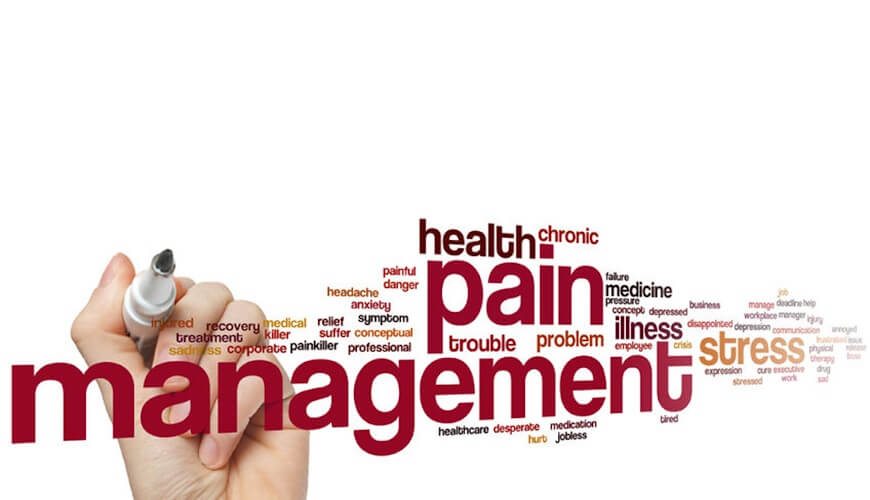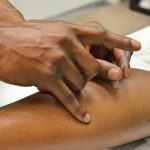PAIN MANAGEMENT HELP
Sometimes the cause of chronic pain cannot be seen on an X-ray or other diagnostic procedure as it may be due to an underlying neuropathy or a functional biomechanical imbalance.
Regardless of why you have pain, you have PAIN! Many of our patients have headaches, migraines, back pain or unexplained chronic pain. Their successful recovery can be attributed not only to the therapy received here at Guelph Rehab Centre but also from these 4 tips that help manage their pain.
TIP #1: BE ACTIVE
Many patients are afraid of making the pain worse and feel it is best to rest, but unless it is acute pain (recently injured, or a lot of inflammation and swelling) you should begin activity. Too much rest will cause your muscles and joints to weaken and stiffen up and will in fact cause an increase in pain.
At a pace that is comfortable, perform any activity that you can handle such as walking and/or cycling, swimming. Keep in mind, you may feel discomfort, however if the activity is controlled and within your physical limits, you are not causing further damage to the areas affected by pain.
Try shorter durations such as 10-minute walks, 3 times each day rather than one 30-minute walk. Perform your activity earlier in the day as people tend to get tired and less motivated later in the day. Set goals for yourself as this will give you a sense of accomplishment thus fending off depression and the feeling of being helpless.
Being active has one last benefit: it makes you feel less like a prisoner of your pain.
TIP #2: TRACK YOUR PAIN
Keep a pain diary. It may sound corny as we mainly want to forget our pain, however, tracking when you feel pain and the level of pain, can assist with recognizing the patterns and triggers. You then can adjust when and how you perform these activities.
Often, those with chronic pain no longer acknowledge the severity of pain but rather focus on the mere fact they are experiencing pain. It is important to know that there are good and bad days. Focus on the good and continue to mimic the days when you had less pain.
One way to track pain is to use a pain scale of 1-10. The scale sees 1 as being very little to no pain, and 10 being extreme pain. Also, note days and times but be brief (morning, afternoon, evening) and briefly note the activity (walked dog 10 minutes, loaded dishwasher, on computer 20 minutes).
Review your findings after a couple of weeks and see if you can find any patterns. Maybe you feel worse simply folding clothes or perhaps walking the dog made you feel better. This is valuable information that will allow you to control your daily activity and make modifications to the duration or the way you perform them. For example, use a lumbar support when sitting at the computer, get up after 20 minutes to stretch, or wear comfortable footwear inside the house rather than walking around in your socks.
TIP #3: DON’T OVERDO IT
Moderation is key otherwise you will feel it the next day making it that much harder to stay active.
At some point, you will recognize how long you can tolerate an activity before feeling pain. Therefore, ensure you STOP the activity BEFORE you feel PAIN. Remember to work with time limits not the number of tasks to perform. You are now CONTROLLING your pain.
Also, remember it is easier to prevent pain than to get rid of it. So, instead of cutting the entire lawn, maybe cut the front yard then take a break before cutting the backyard. Fold half of the laundry in the basket, break, then fold the remaining items. This will certainly take some getting used to, but your physical and mental health will benefit overall.
AND ONE MORE VERY IMPORTANT TIP…
TIP #4: OWN YOUR PAIN
For these tips to be effective, we ask that you take ownership of your pain.
We know this is an odd request but it doesn’t serve any purpose to lay blame over who is responsible for your pain. If you get caught up in the blame game you become angry, resulting in stress and then, more pain. So, whether you’re disappointed by our healthcare system or your boss won’t modify your workstation, continuing to lay blame is a very bad cycle. Break through the downward spiral by taking the wheel and control your pain. It’s not easy, but once you accept that the pain is YOURS it will be easier to control. Doctors and therapists will be there to assist, but you are in charge of your pain.
For more information on Guelph Rehab Centre’s chronic pain programs please feel free to contact us directly.








